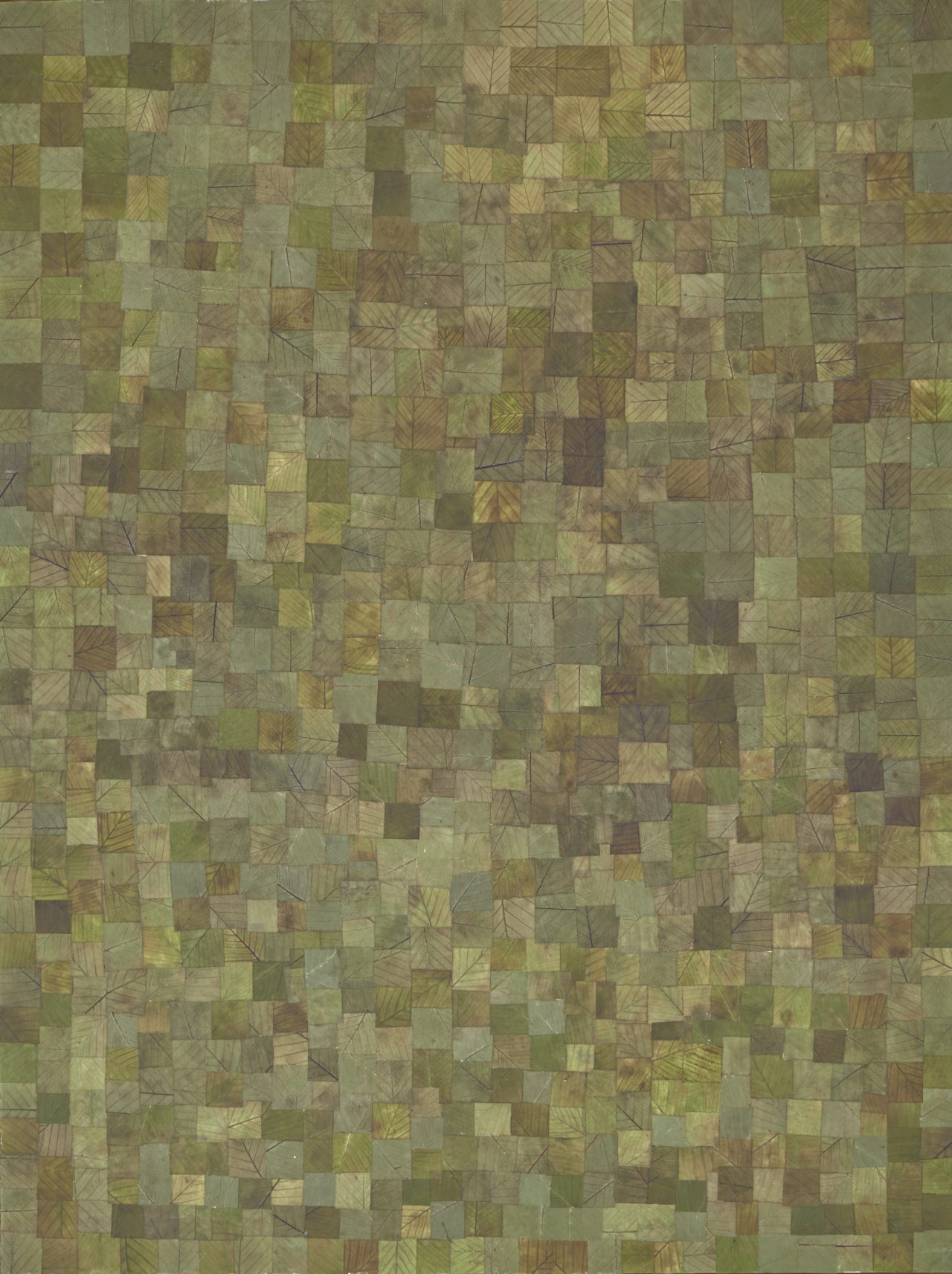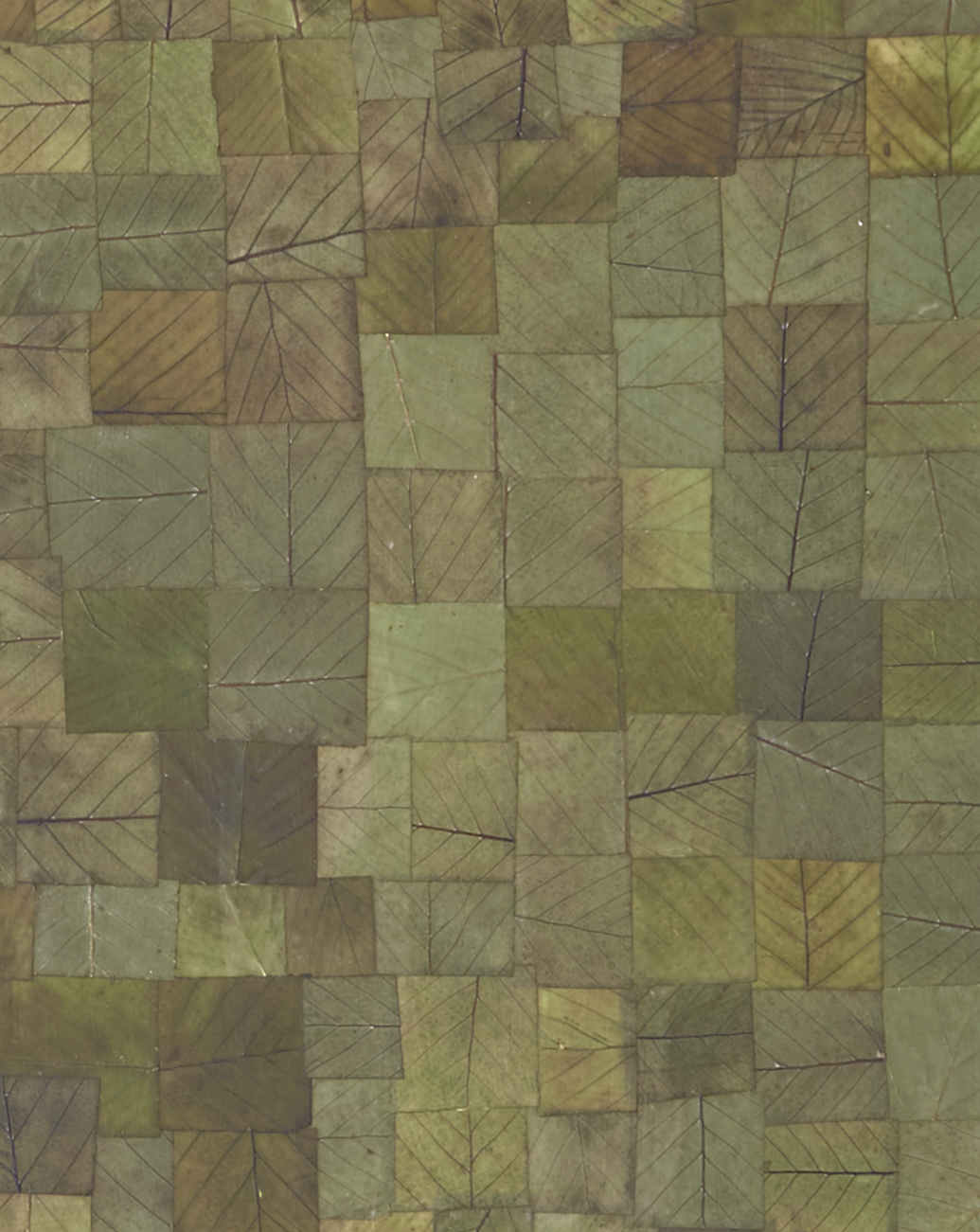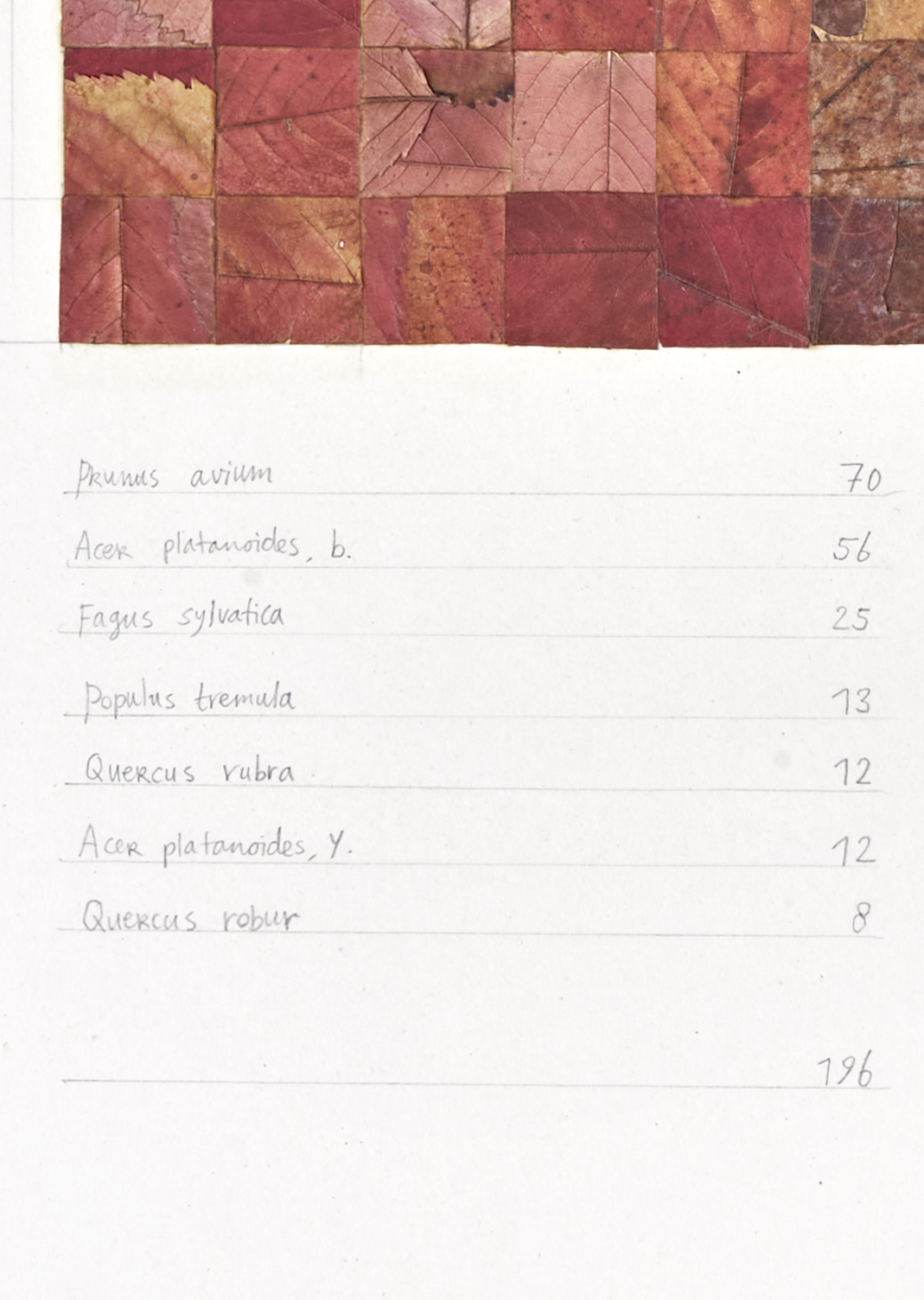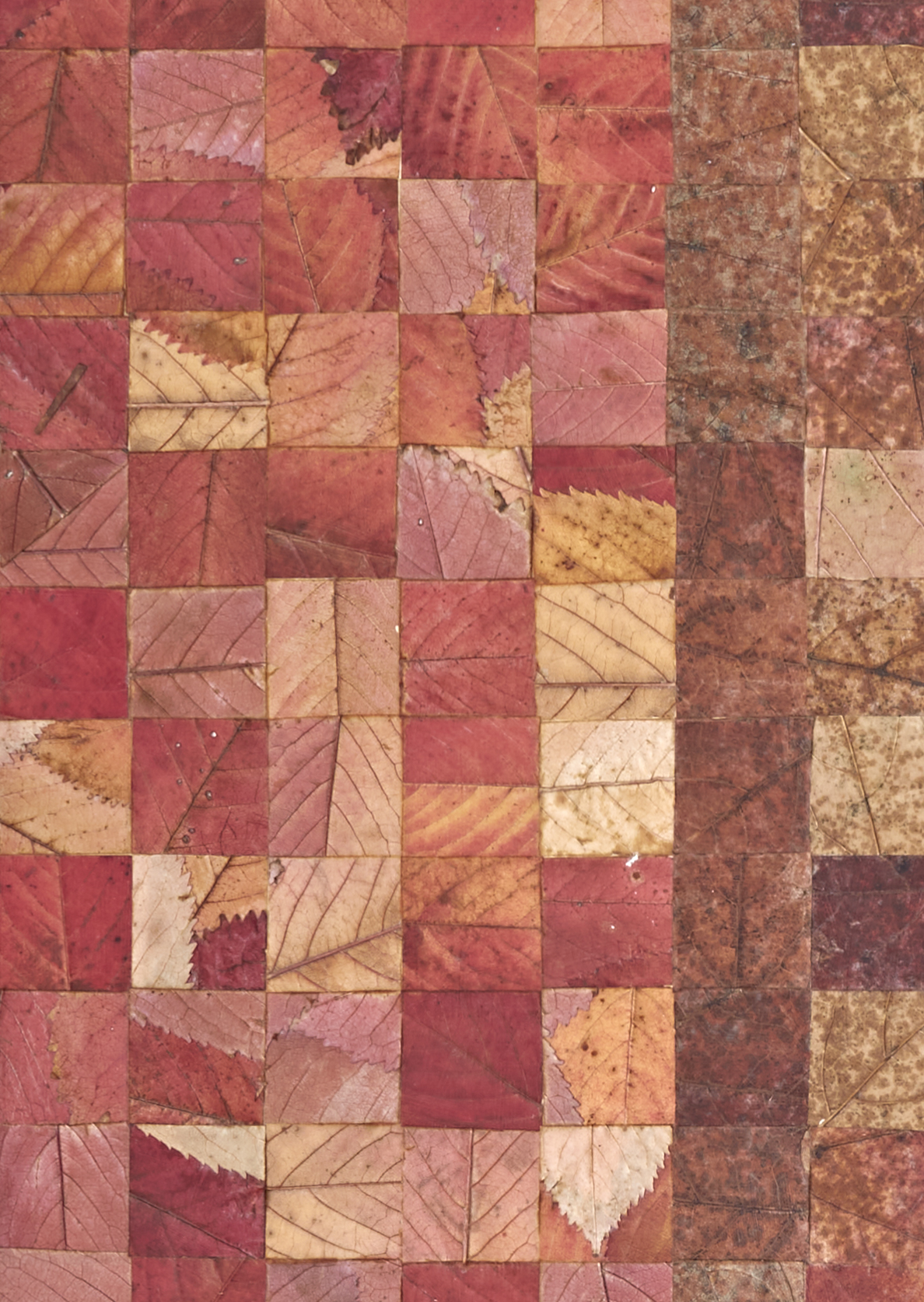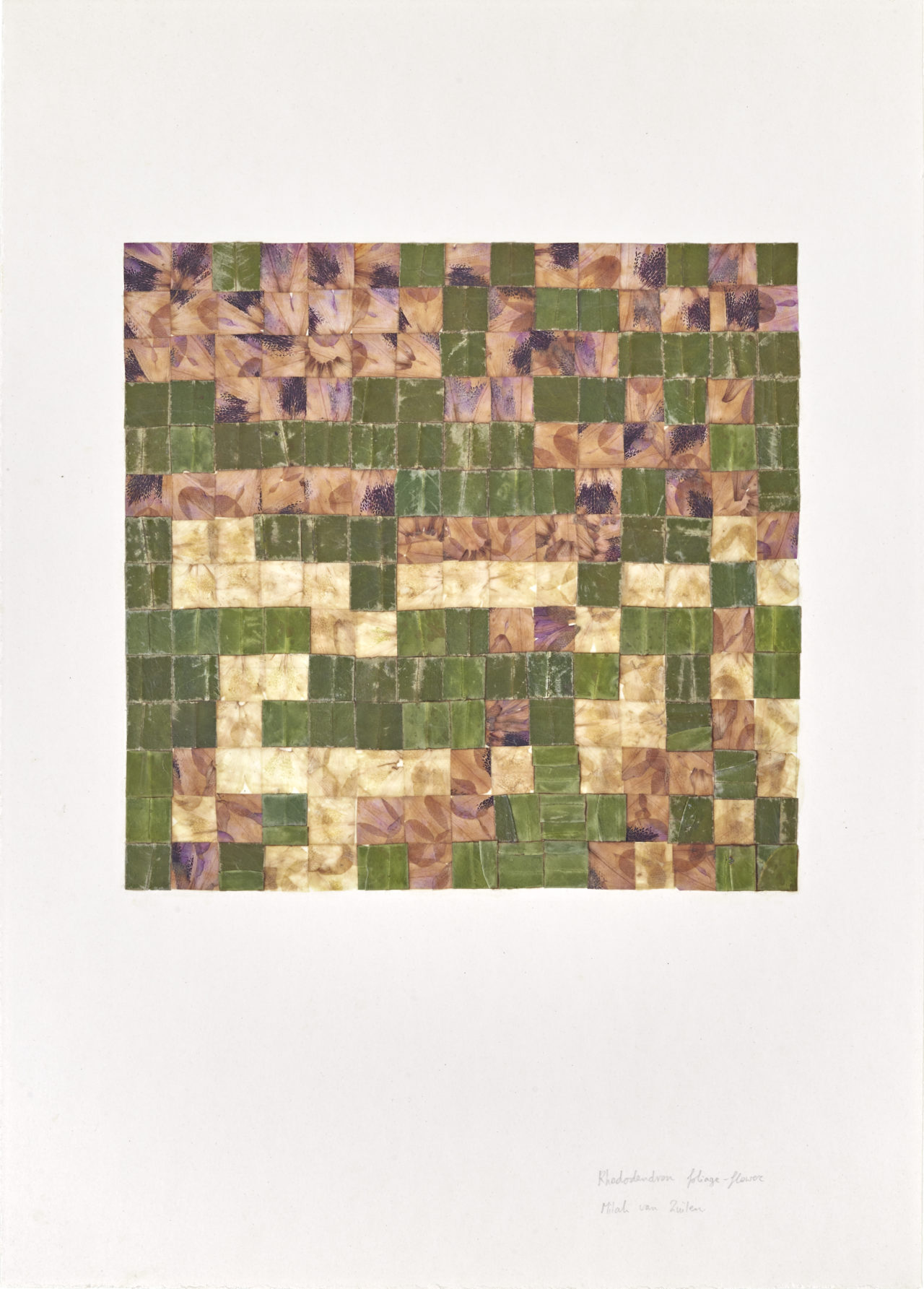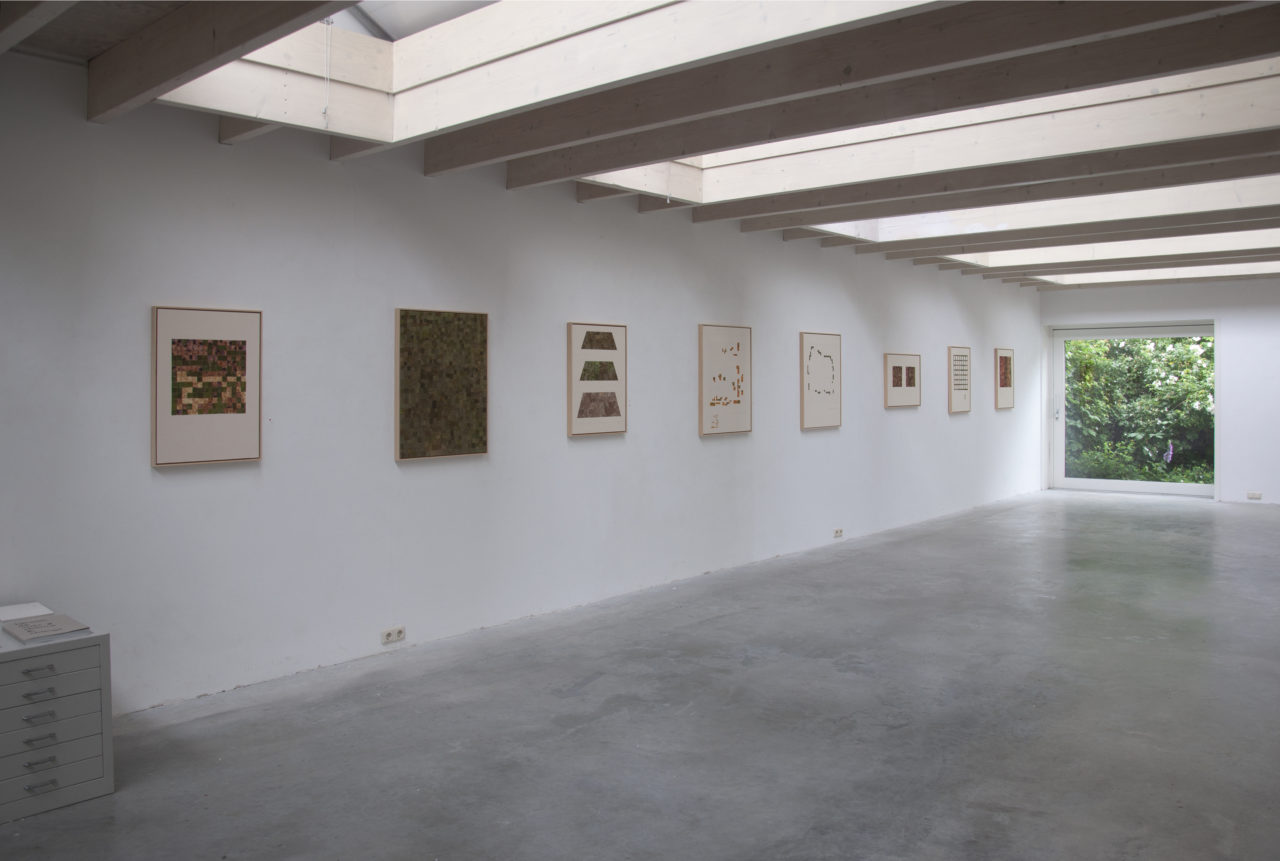Terrafuturism

Terrafuturism imagines Earth’s future through pseudo-scientific fieldwork.
Leaves are collected and dried, then cut into squares and neatly arranged into a grid. Grid-shaped structures are often used to impose an anthropocentric order onto the landscape. They appear in taxonomy and cartography, but also physically in the landscape, through agricultural land use. Terrafuturism investigates the contradiction between nature’s complexity and people’s urge to untangle and neatly arrange.
Will the Earth’s future be untangled? Will it be cultivated? Will it be wild? Will it be monocultural? Will it have diversity? Will it be round? Will it be square? Will it be true? Will it be real? Will it make sense? Will it be digital? Will it be pixelated? Will it be fragmented? Will it be human?
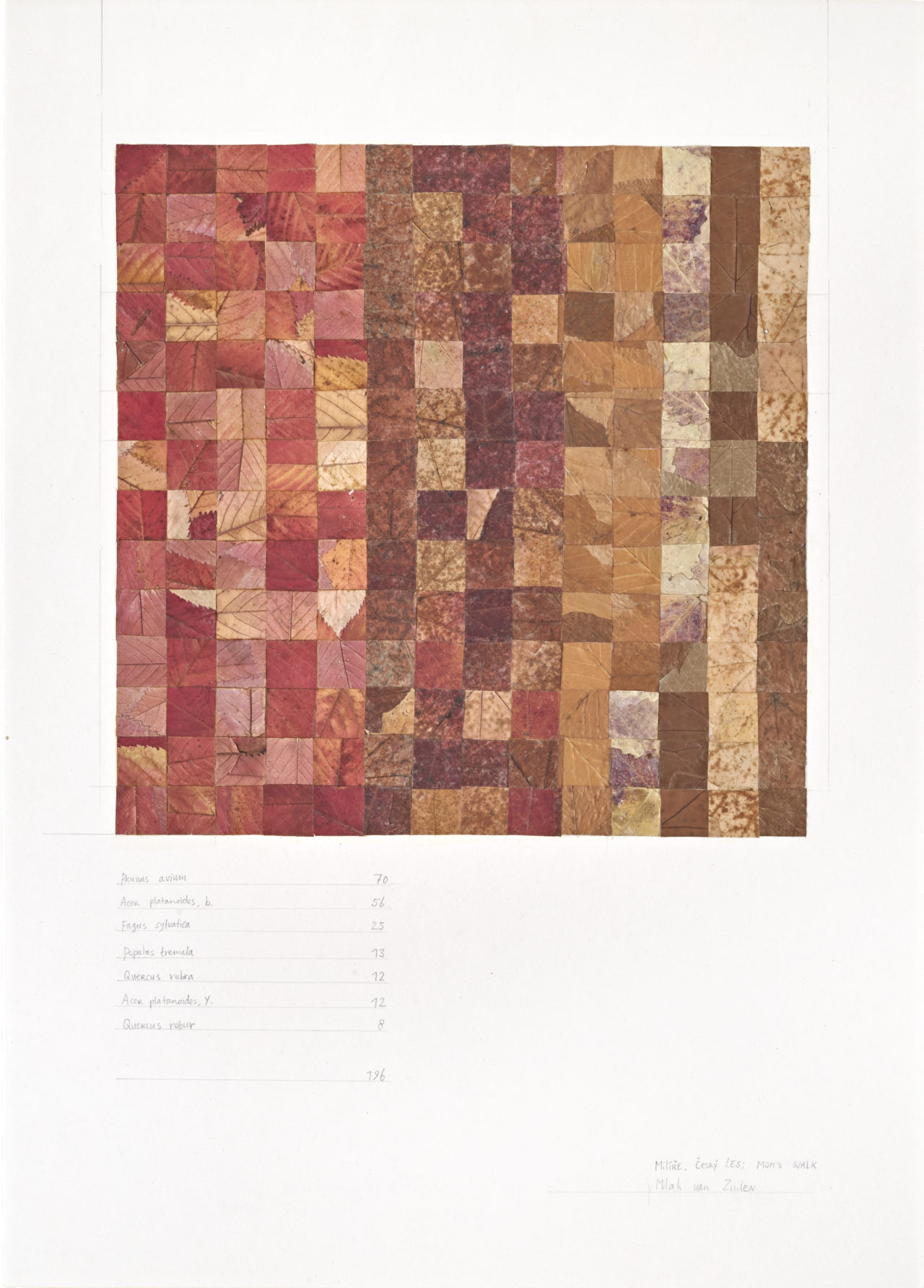
Mom’s Walk, Milíře, Český les
Milah asked her mother to collect leaves on one of her walks. Her mother lives in the Czech Republic, where she collected and dried the leaves. She sent them to the Netherlands by post, where Milah organised them, named them, and cut them up into squares. They were then neatly arranged by species, from left to right, starting with the species represented by the highest amount of squares and ending with the species represented by the least amount of squares.

Oak-beech forest floor
In Oak-beech forest floor, a rectangular piece of forest was systematically walked through. Milah started walking in straight consecutive lines, collecting leaves. After every few lines, she went home to dry the gathered material. The dried leaves were then cut into squares and neatly arranged into a grid, line by line. As a result, all square pieces of leaves in this work geographically refer to their original placement on the forest floor.

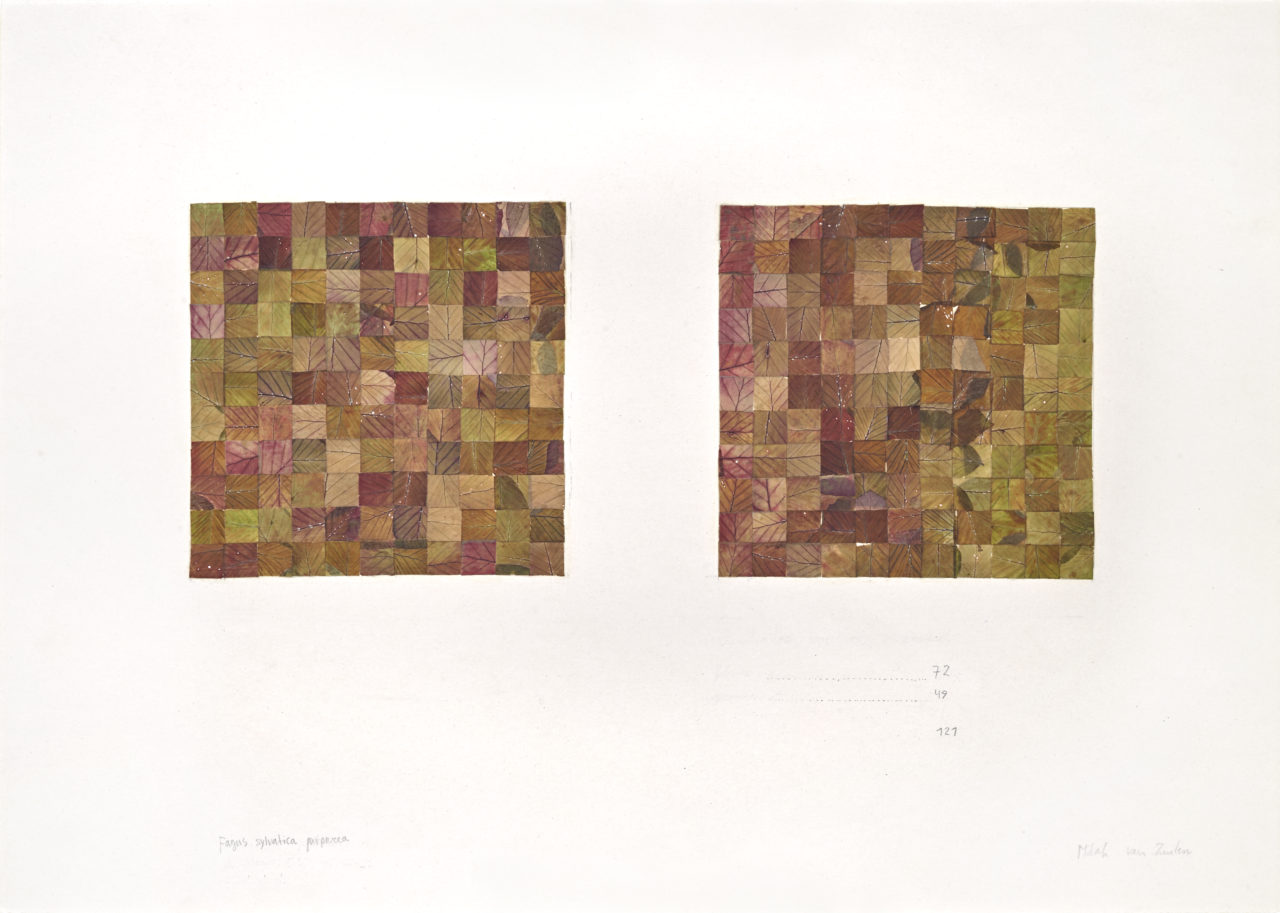
Fagus sylvatica purpurea
For this fieldwork experiment, leaves from Fagus sylvatica purpurea (copper beech) were collected and dried. They were then cut into squares and arranged into two grids. In one, the leaves were arranged at random. In the other, the leaves were somewhat arranged by colour, in a gradient from purple to green.

Taraxacum officinale foliage-flower
For this fieldwork experiment, a grid was imaginatively projected onto a field. The appearance and distribution of Taraxacum officinale (dandelion) was observed. Where was the appearance of the species represented by foliage and where by flowers? Both the flowers and the leaves were collected and transformed into the shape of a grid structure, referring to their geospatial appearance in the field.
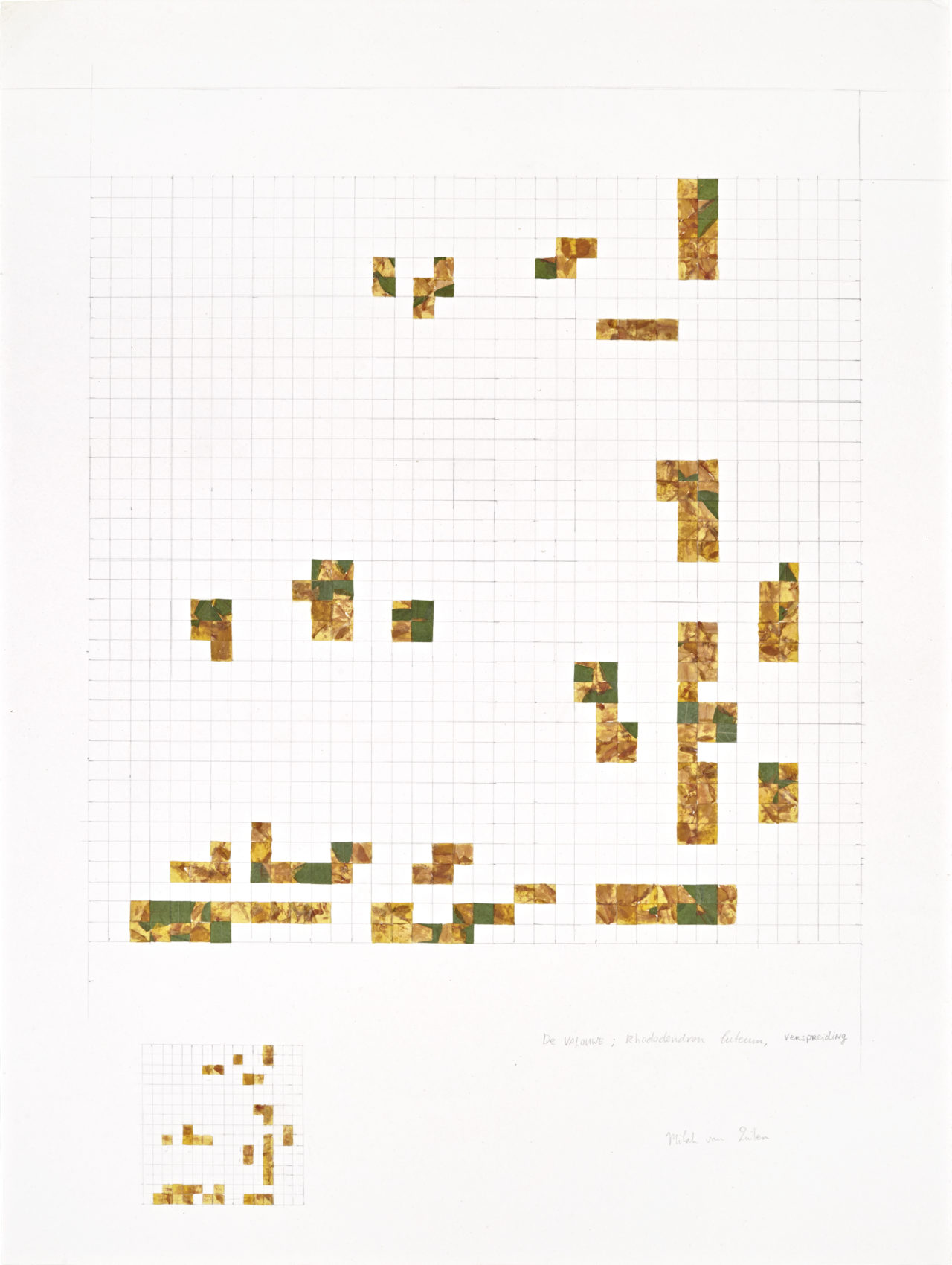
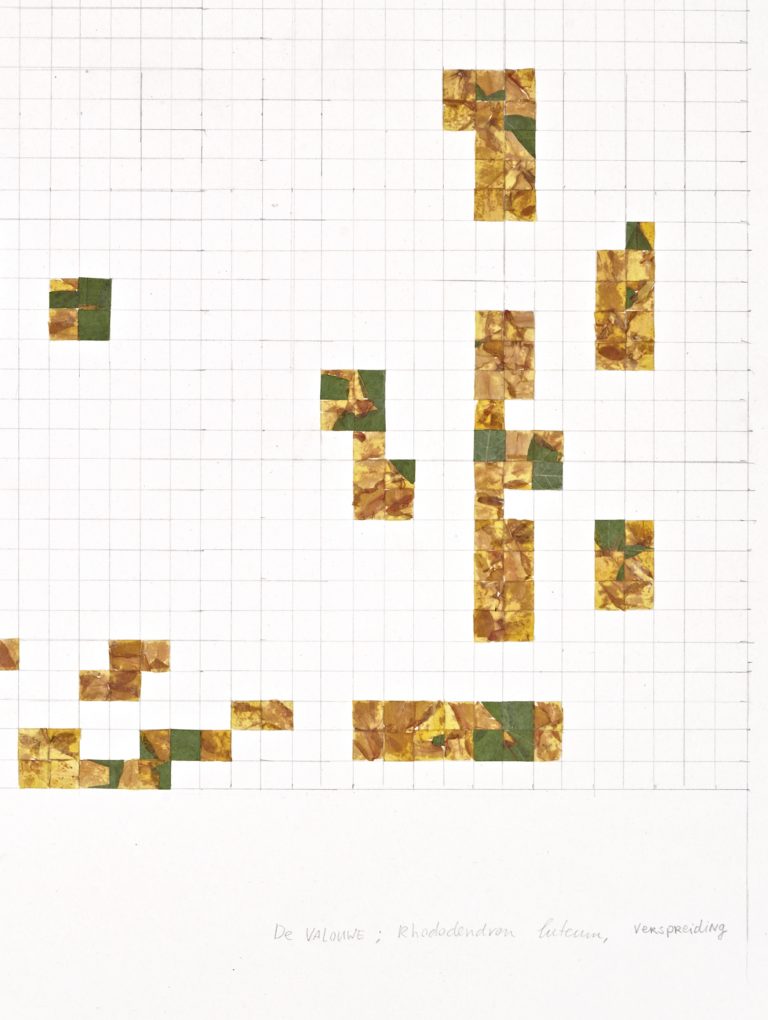
Rhododendron luteum distribution
For this fieldwork experiment, Milah observed the geographical distribution of Rhododendron luteum (yellow azalea). In an area with self-imposed borders, the plant’s leaves were collected. They were then dried and transformed into a grid structure, depicting the species’ geographical distribution.
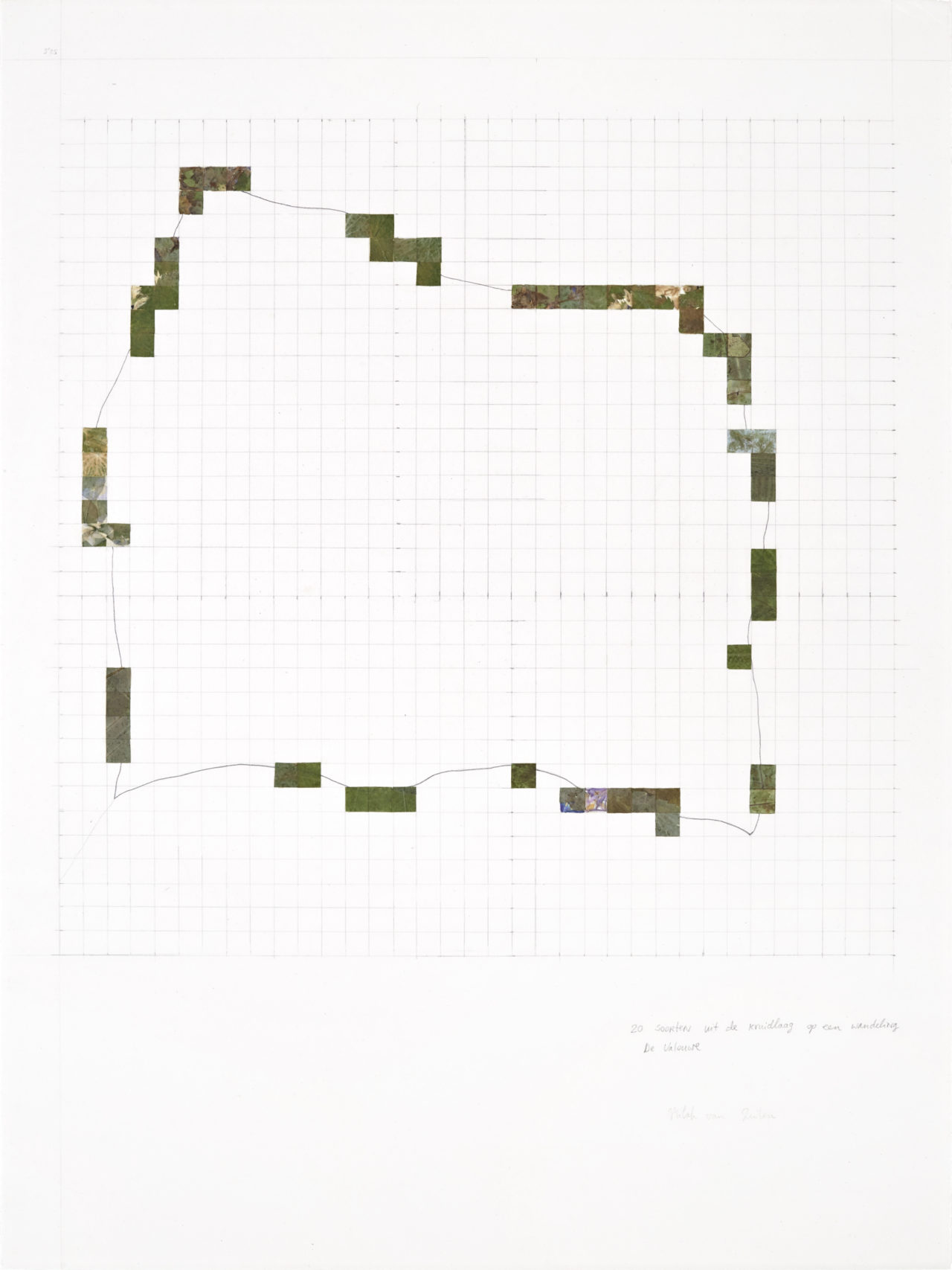

Species from the herbaceous layer on my walk
For this fieldwork experiment, leaves were collected from the herbaceous layer on one of Milah’s walks. She dried them, cut them into squares, and arranged them according to the order in which they were found.
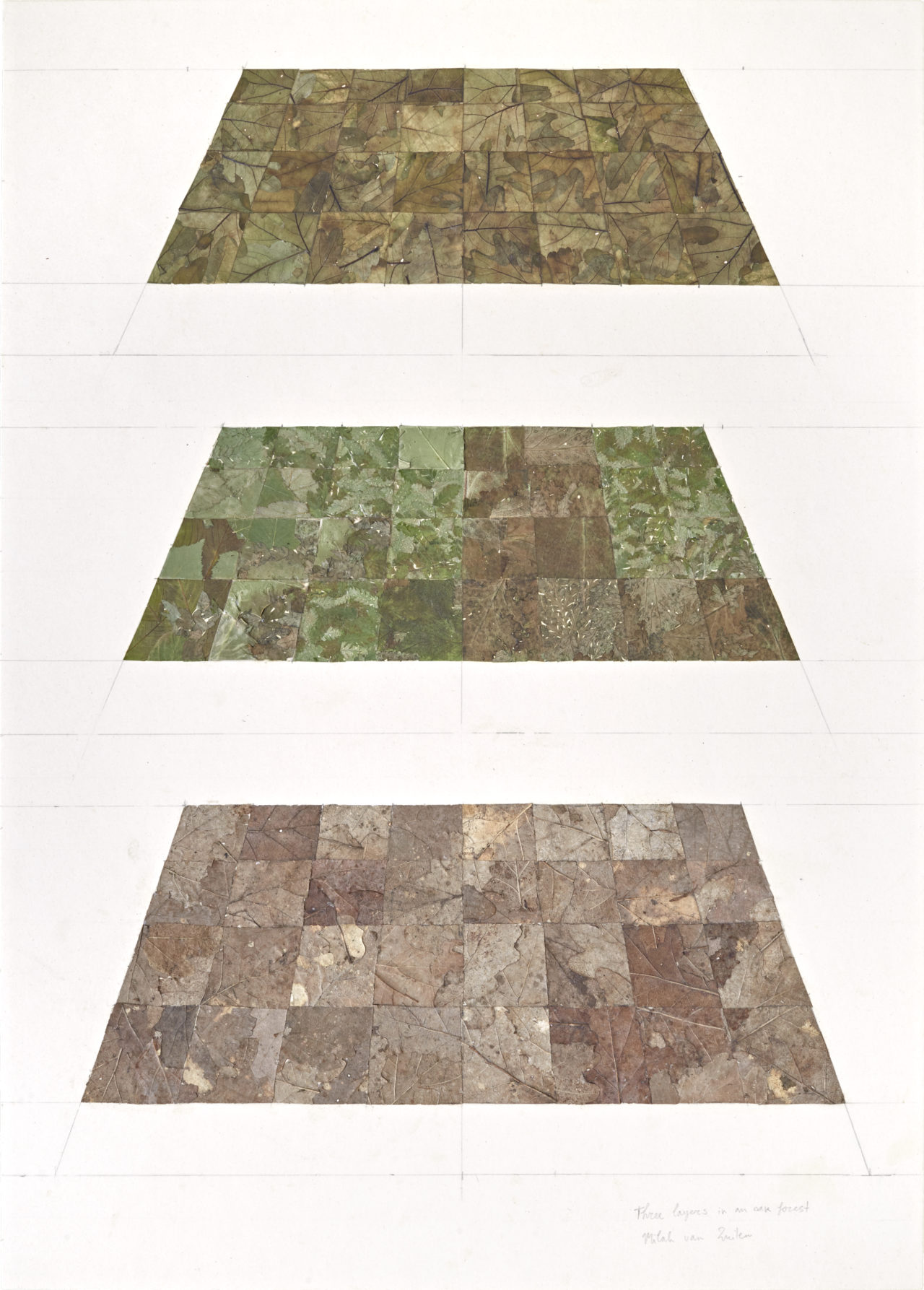
Three layers in an oak forest
For this fieldwork experiment, plant material was collected from three horizontal layers in an oak forest. The material was dried and transformed into grids. Starting with the lowest layer, the first one consists of fallen leaves from last autumn, found in the litter layer on the forest floor. The third layer consists of this spring’s new leaves, collected from the branches of the oak trees. The middle layer consists of the herbaceous vegetation growing underneath the oak trees.
This project was shown in a duo exhibition with herman de vries, at Galerie Wit in Wageningen.

